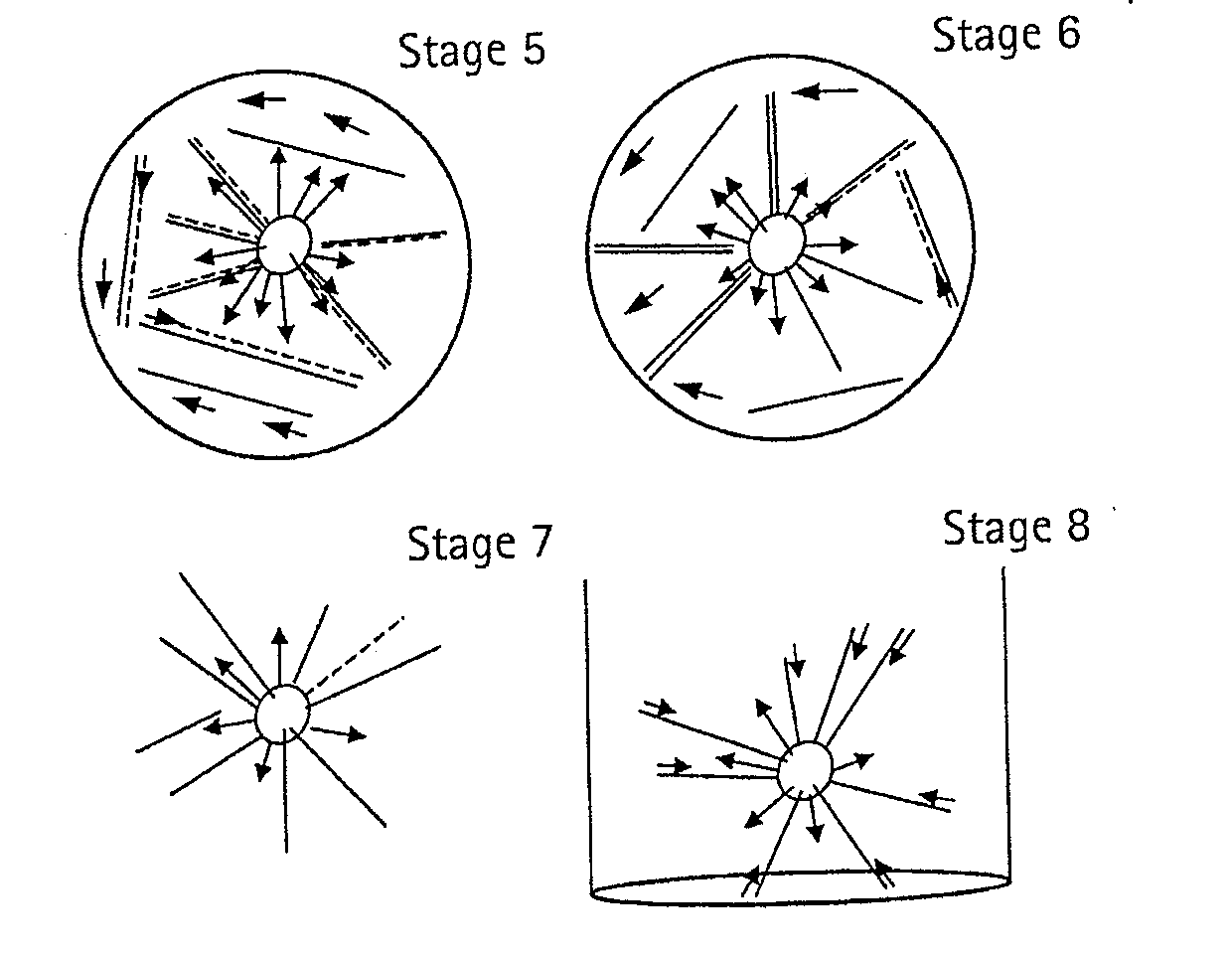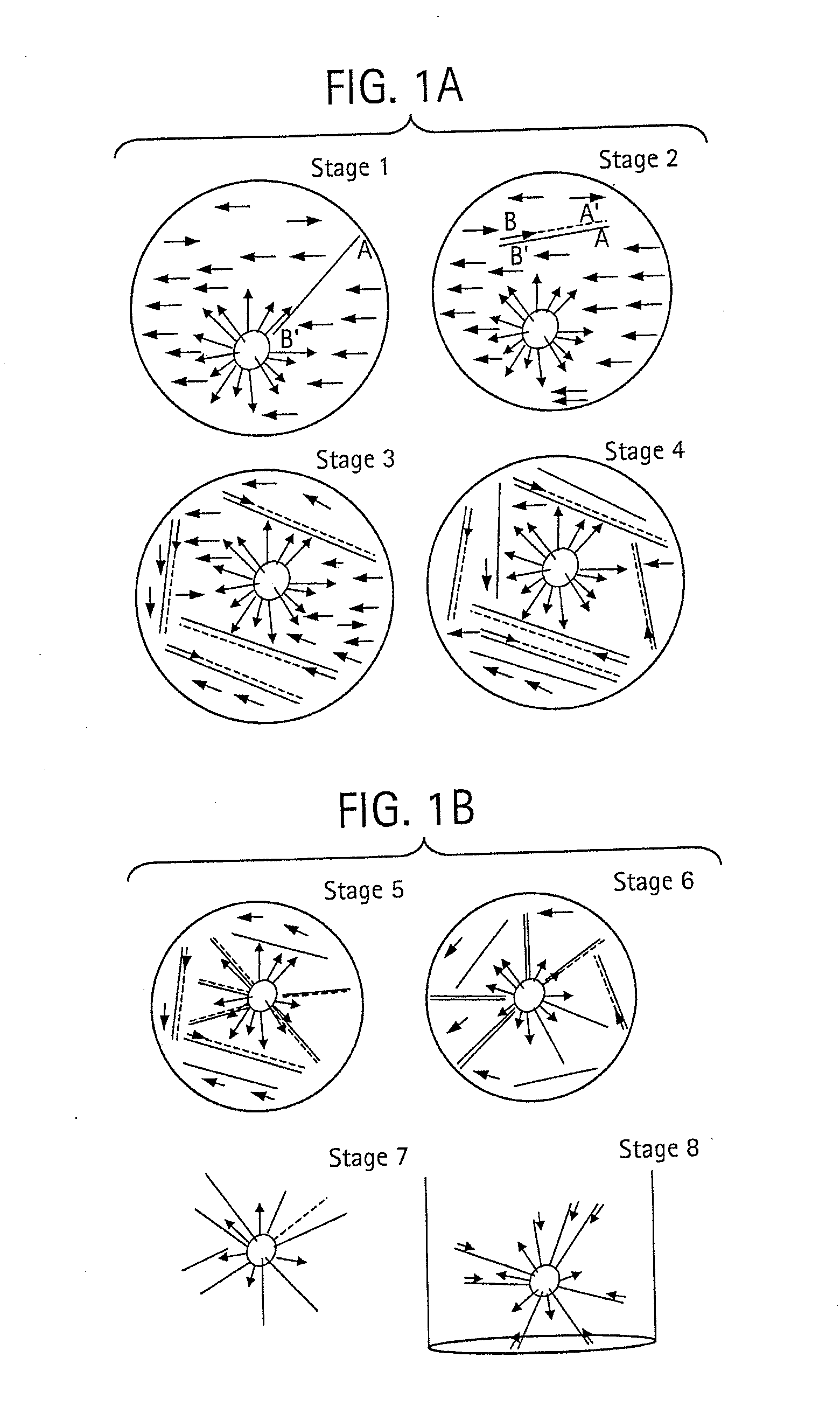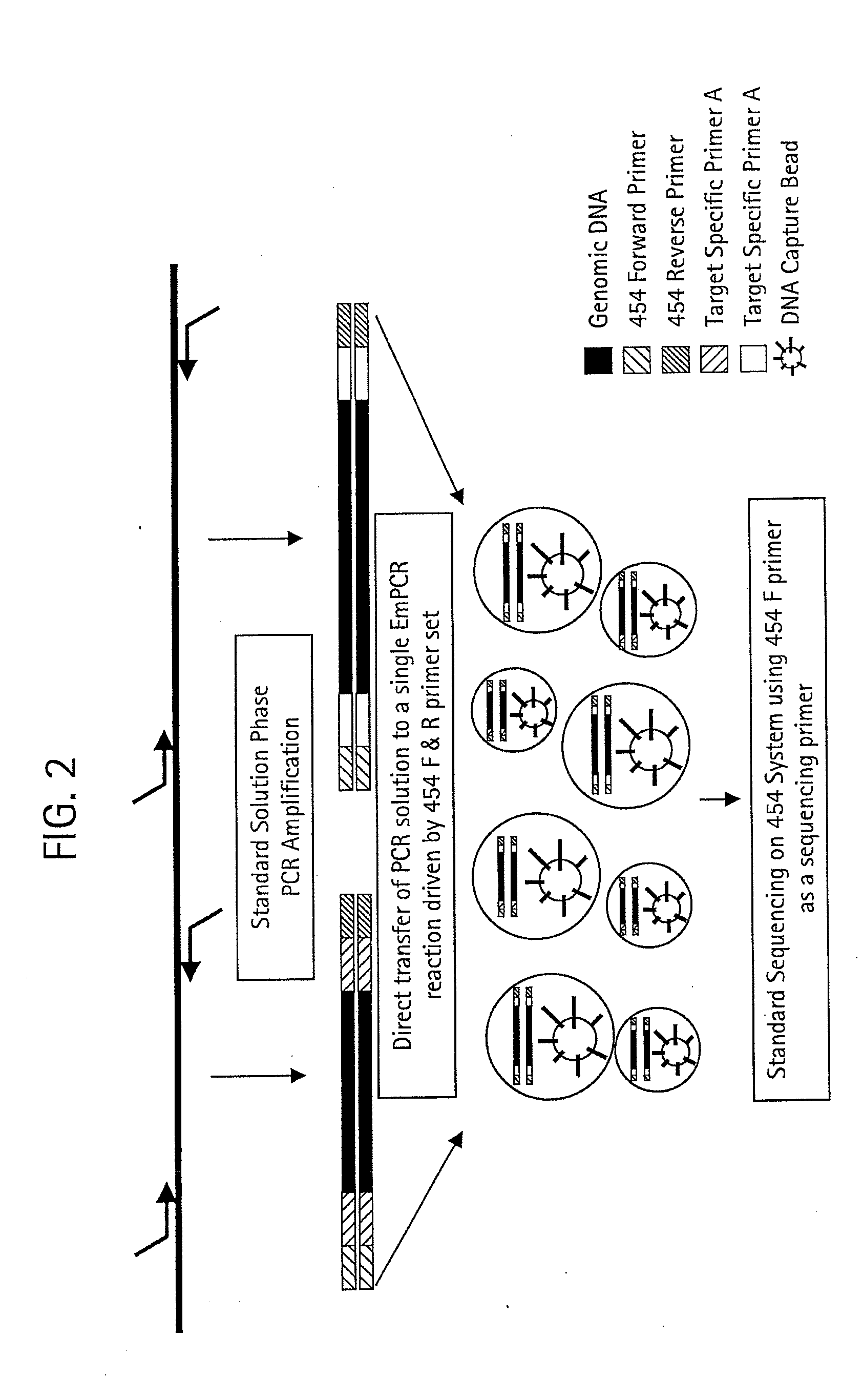Methods for Determining Sequence Variants Using Ultra-Deep Sequencing
a technology of sequence variants and ultra-deep sequencing, which is applied in the field of methods for determining sequence variants using ultra-deep sequencing, can solve the problems that none of the current methods has provided a simple and rapid method of detecting snp, and achieves the effects of reducing time and effort, high multiplexing ability, and considerable potential
- Summary
- Abstract
- Description
- Claims
- Application Information
AI Technical Summary
Benefits of technology
Problems solved by technology
Method used
Image
Examples
example 1
Sequencing of the HLA Locus
[0081]Five PCR primer pairs were designed to span known, publicly disclosed SNPs in the MHC class II locus. Primers were design using the Primer3 software (Whitehead Institute for Biomedical Research) using approx. 200 base-pair long genomic sequences encompassing the target regions as input. Each primer consisted of a locus specific 3′ portion ranging in length from 20 to 24 bases and a constant 19 base 5′ portion (shown in lowercase) that includes a 4 base key (high-lighted in bold). Primers were purchased from Integrated DNA Technologies (Coralville, Iowa):
SAD1F-DC1(SEQ ID NO: 1)gcctccctcgcgcca tcag ACCTCCCTCTGTGTCCTTACAASAD1R-DC1(SEQ ID NO: 2)gccttgccagcccgc tcag GGAGGGAATCATACTAGCACCASAD1F-DD14(SEQ ID NO: 3)gcctccctcgcgcca tcag TCTGACGATCTCTGTCTTCTAACCSAD1R-DD14(SEQ ID NO: 4)gccttgccagcccgc tcag GCCTTGAACTACACGTGGCTSAD1F-DE15(SEQ ID NO: 5)gcctccctcgcgcca tcag ATTTCTCTACCACCCCTGGCSAD1R-DE15(SEQ ID NO: 6)gccttgccagcccgc tcag AGCTCATGTCTCCCGAAGAASAD1F-GA...
example 2
Sensitive Mutation Detection
[0084]To demonstrate the capability of the current system (i.e., the 454 platform) to detect low abundance sequence variants, specifically single base substitutions, experiments were designed to sequence known alleles mixed at various ratios.
[0085]The 6 primer pairs listed above were tested for amplification efficiency and further analysis was performed using pairs SAD1F / R-DD14, SAD1F / R-DE15 and SAD1F / R-F5 which all produced distinct amplification products (FIG. 3). A total of 8 human genomic DNA samples were amplified and sequenced on the 454 platform to determine the genotypes for each locus. To simplify the experimental setup all further analysis was done using primer pair SAD1F / R-DD14 (FIG. 3A) and two samples shown to be homozygous for either the C or T allele at the particular locus.
[0086]The primary amplicons from each sample were quantitated and mixed at specific ratios ranging from 10:90 down to 1:1000, typically with the T allele in excess. Afte...
example 3
Bacterial 16S Project—A Method to Examine Bacteria Populations
[0088]Bacterial population surveys are essential applications for many fields including industrial process control, in addition to medical, environmental and agricultural research. One common method utilizes the 16S ribosomal RNA gene sequence to distinguish bacterial species (Jonasson, Olofsson et al. 2002; Grahn, Olofsson et al. 2003). Another method similarly examines the intervening sequence between the 16S and 23S ribosomal RNA genes (Garcia-Martinez, Bescos et al. 2001). However, the majority of researchers find a complete census of complex bacterial populations is impossible using current sample preparation and sequencing technologies; the labor requirements for such a project are either prohibitively expensive or force dramatic subsampling of the populations.
[0089]Currently, high throughput methods are not routinely used to examine bacterial populations. Common practice utilizes universal primer(s) to amplify the ...
PUM
| Property | Measurement | Unit |
|---|---|---|
| diameter | aaaaa | aaaaa |
| diameter | aaaaa | aaaaa |
| diameter | aaaaa | aaaaa |
Abstract
Description
Claims
Application Information
 Login to View More
Login to View More - R&D
- Intellectual Property
- Life Sciences
- Materials
- Tech Scout
- Unparalleled Data Quality
- Higher Quality Content
- 60% Fewer Hallucinations
Browse by: Latest US Patents, China's latest patents, Technical Efficacy Thesaurus, Application Domain, Technology Topic, Popular Technical Reports.
© 2025 PatSnap. All rights reserved.Legal|Privacy policy|Modern Slavery Act Transparency Statement|Sitemap|About US| Contact US: help@patsnap.com



